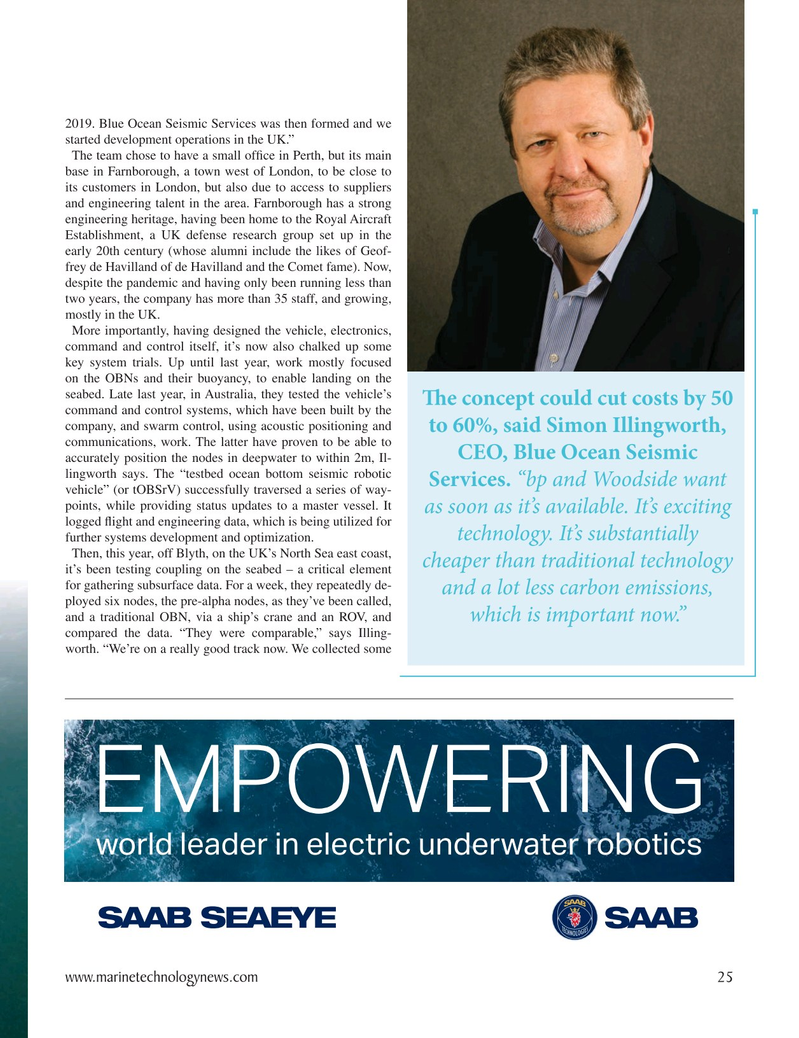
Page 25: of Marine Technology Magazine (November 2021)
Ocean Observation: Gliders, Buoys & Sub-Surface Networks
Read this page in Pdf, Flash or Html5 edition of November 2021 Marine Technology Magazine
2019. Blue Ocean Seismic Services was then formed and we started development operations in the UK.”
The team chose to have a small of? ce in Perth, but its main base in Farnborough, a town west of London, to be close to its customers in London, but also due to access to suppliers and engineering talent in the area. Farnborough has a strong engineering heritage, having been home to the Royal Aircraft
Establishment, a UK defense research group set up in the early 20th century (whose alumni include the likes of Geof- frey de Havilland of de Havilland and the Comet fame). Now, despite the pandemic and having only been running less than two years, the company has more than 35 staff, and growing, mostly in the UK.
More importantly, having designed the vehicle, electronics, command and control itself, it’s now also chalked up some key system trials. Up until last year, work mostly focused on the OBNs and their buoyancy, to enable landing on the seabed. Late last year, in Australia, they tested the vehicle’s
T e concept could cut costs by 50 command and control systems, which have been built by the company, and swarm control, using acoustic positioning and to 60%, said Simon Illingworth, communications, work. The latter have proven to be able to
CEO, Blue Ocean Seismic accurately position the nodes in deepwater to within 2m, Il- lingworth says. The “testbed ocean bottom seismic robotic
Services. “bp and Woodside want vehicle” (or tOBSrV) successfully traversed a series of way- points, while providing status updates to a master vessel. It as soon as it’s available. It’s exciting logged ? ight and engineering data, which is being utilized for technology. It’s substantially further systems development and optimization.
Then, this year, off Blyth, on the UK’s North Sea east coast, cheaper than traditional technology it’s been testing coupling on the seabed – a critical element for gathering subsurface data. For a week, they repeatedly de- and a lot less carbon emissions, ployed six nodes, the pre-alpha nodes, as they’ve been called, and a traditional OBN, via a ship’s crane and an ROV, and which is important now.” compared the data. “They were comparable,” says Illing- worth. “We’re on a really good track now. We collected some
EMPOWERING world leader in electric underwater robotics www.marinetechnologynews.com 25
MTR #8 (18-33).indd 25 11/22/2021 11:58:45 AM

 24
24

 26
26
